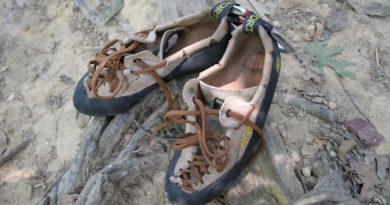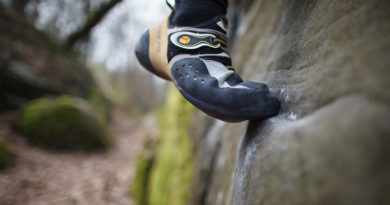Choose Wisely: Approach Shoes vs. Hiking Shoes
Approach shoes and hiking shoes are both designed for outdoor activities, but they serve different purposes. Approach shoes are primarily intended for climbers or hikers who need to scramble over rocks or climb steep terrain before reaching their destination. They are characterized by a sticky rubber sole and a close-to-the-ground design that provides a good grip on rock surfaces. In contrast, hiking shoes are designed for longer treks and provide more support, cushioning, and protection for the foot. They typically have a sturdier sole and more padding in the midsole and upper, making them better suited for longer hikes and varied terrain.
What are Approach Shoes?
Approach shoes are a type of footwear that is specifically designed for approaches to climbing or bouldering areas, as well as for hiking on rocky terrain. They are generally sturdier and more durable than traditional hiking shoes and feature a variety of design elements that make them well-suited for outdoor activities.
The design of approach shoes typically includes a sticky rubber sole that provides excellent traction on uneven surfaces, as well as a protective rubber rand around the shoe that helps to prevent damage from rocks and other debris. Many approach shoes also have a low-profile design that allows for greater flexibility and precision when navigating technical terrain, as well as a stiff midsole that provides support and stability for the foot.
In addition to their unique design, approach shoes offer a variety of benefits for outdoor activities. For example, the sticky rubber sole provides excellent grip on rocks and other uneven surfaces, which can help to prevent slips and falls. The low-profile design of many approach shoes also makes them a good choice for climbers, as they allow for greater sensitivity and control when navigating technical routes. Additionally, the protective rubber rand around the shoe helps to prevent damage to the shoe and foot from rocks and other debris.
What are Hiking Shoes?
Hiking shoes, on the other hand, are a type of footwear that is designed for hiking and other outdoor activities on a variety of terrain types. They are generally lighter and more flexible than approach shoes and feature a variety of design elements that make them well-suited for extended periods of walking and standing.
The design of hiking shoes typically includes a durable and breathable upper material, such as leather or synthetic mesh, as well as a cushioned midsole that provides support and shock absorption for the foot. Many hiking shoes also feature a sturdy outsole with deep lugs that provide excellent traction on a variety of terrain types, including dirt, gravel, and rock.
In addition to their comfortable and versatile design, hiking shoes offer a variety of benefits for outdoor activities. For example, the cushioned midsole provides support and shock absorption for the foot, which can help to prevent foot fatigue and injuries. The sturdy outsole with deep lugs also provides excellent traction on a variety of terrain types, which can help to prevent slips and falls. Additionally, the breathable upper material helps to keep the foot cool and dry, even during extended periods of activity. Overall, hiking shoes are a great choice for outdoor enthusiasts who want a comfortable, durable, and versatile shoe that can handle a variety of terrain types.
Pros and Cons of Approach Shoes
Approach shoes offer several advantages for outdoor activities, particularly for those engaging in climbing or hiking on rocky terrain. Their sticky rubber soles provide excellent traction on uneven surfaces, which can help to prevent slips and falls. Additionally, the low-profile design of many approach shoes allows for greater sensitivity and control when navigating technical terrain, making them a popular choice for climbers. The protective rubber rand around the shoe also helps to prevent damage to the shoe and foot from rocks and other debris.
However, there are also some disadvantages to using approach shoes. They tend to be heavier and less flexible than hiking shoes, which can make them less comfortable for extended periods of walking or standing. Additionally, their stiff midsole, while providing support and stability, can also make them less comfortable for walking on flat or less technical terrain.
Real-world situations where approach shoes are the best choice include approaches to climbing areas or bouldering problems, as well as hiking on rocky or technical terrain. Their sticky rubber soles and low-profile design make them well-suited for these activities, allowing for greater control and precision when navigating difficult terrain. However, for longer hikes on less technical terrain, hiking shoes may be a better choice due to their lighter weight and greater flexibility.
Pros and Cons of Hiking Shoes
Hiking shoes also offer several advantages for outdoor activities, particularly for those engaging in extended periods of walking or standing. Their cushioned midsole provides support and shock absorption for the foot, which can help to prevent foot fatigue and injuries. Additionally, their sturdy outsole with deep lugs provides excellent traction on a variety of terrain types, making them a popular choice for hikers.
However, there are also some disadvantages to using hiking shoes. They tend to be less durable than approach shoes, and may not hold up as well when exposed to rocks and other debris. Additionally, their flexible design may make them less suitable for technical terrain, as they may not provide the same level of control and precision as approach shoes.
Real-world situations where hiking shoes are the best choice include longer hikes on less technical terrain, as well as activities that involve extended periods of walking or standing. Their cushioned midsole provides support and shock absorption for the foot, which can help to prevent foot fatigue and injuries. Additionally, their sturdy outsole with deep lugs provides excellent traction on a variety of terrain types, making them a good choice for hikers.
Which one is Right for you?
When choosing between approach shoes and hiking shoes, it’s important to consider a variety of factors in order to make the right decision for your specific needs. One of the most important factors to consider is the terrain you will be hiking or climbing on. If you will be navigating technical terrain with lots of rocks and other obstacles, approach shoes may be the best choice due to their sticky rubber soles and low-profile design. However, if you will be hiking on less technical terrain, hiking shoes may be a better choice due to their cushioned midsole and sturdy outsole with deep lugs.
Another factor to consider is your activity level. If you will be engaging in activities that involve extended periods of walking or standing, hiking shoes may be a better choice due to their cushioned midsole and support. However, if you will be engaging in more technical activities that require greater control and precision, approach shoes may be a better choice due to their low-profile design and sticky rubber soles.
Personal preferences are also an important factor to consider. Some people may prefer the feel and fit of approach shoes, while others may prefer the comfort and support of hiking shoes. It’s important to try on both types of shoes and see which one feels most comfortable and supportive for your feet.
Conclusion
In conclusion, both approach shoes and hiking shoes offer their own unique set of advantages and disadvantages for outdoor activities. When choosing between these two types of shoes, it’s important to consider factors such as the terrain you will be navigating, your activity level, and your personal preferences. Approach shoes may be the best choice for technical terrain and activities that require greater control and precision, while hiking shoes may be a better choice for less technical terrain and activities that involve extended periods of walking or standing.




